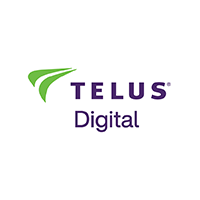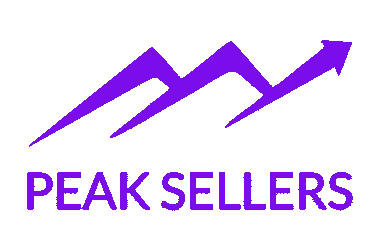Distant group productiveness has been beneath scrutiny as a result of the start of the 2020s. Nonetheless how often do teams reply to criticism and look to boost group productiveness with info?
Firms that pivoted to distant work fashions by the pandemic have largely stayed the course — and with good function. In accordance with Forbes, 98% of U.S. team members want the option to work remotely on the very least part of the time.
Nonetheless is keen to work remotely enough of a function to allow staff to take motion?
Productiveness in distant teams can merely slip by means of the cracks. That’s why the shift to distant work has made one issue clear: productiveness monitoring in distant teams isn’t non-obligatory — it’s essential.
Nonetheless, the true downside lies in determining strategies to measure the productiveness of distant staff and use info to gauge effectivity strategically.
Hubstaff’s Workstyle Revolution Report anonymized info all through 22,000 organizations and 185,000 group members. The report outlines key insights on focus time, course of breakdowns, and effectivity developments in distant environments.
From this report, we uncovered employee productiveness metrics and key effectivity indicators (KPIs) which will help, along with:
- Exercise completion cost
- Employees utilization
- Focused work courses
- Outcomes-driven work
On this publish, we’ll break down further key productiveness metrics distant teams ought to look at, what each metric reveals, and strategies to make use of them to optimize group effectivity and effectivity.
Let’s get started.
Improve your group’s effectivity with Hubstaff’s productiveness devices
1. Focus time: Your group’s deep work indicator
Ever actually really feel akin to you’re most likely not locked into the transfer state at work? At Hubstaff, we’ve felt this sense sooner than. Enter a time interval we favor to call focus time.
Focus time refers to uninterrupted consideration to a specific endeavor or course of for on the very least half-hour. This can be a beautiful time administration method for monitoring deep work (or work that requires further cognitive consideration than most) like writing or research-based initiatives.
Focus time analytics can assure group members understand the everyday number of centered courses your teams full in a given time frame. If conferences are slicing into an extreme quantity of of an individual’s focus time, you might make adjustments to cease overwork and burnout.
Insights make distant group productiveness monitoring easy by capturing the primary goal time proportion for each course of your group spends better than half-hour on. You’ll see a complete breakdown of your group’s workday relating to widespread focus time per session and number of centered work courses, and benchmark it based mostly totally on completely totally different roles.
You’ll be able to even view actions like (Websites and apps visited) all through a centered session, which helps you get a 360-degree view of your group’s effectiveness and productiveness developments. Chances are you’ll then use this info to chop again burnout and promote a healthful work-life steadiness.
2. Unproductive time: Recognizing bottlenecks and burnout
Unproductive time refers to non-focused time wasted on non-work-related actions. Employee productiveness software program program can spot potential bottlenecks by looking at info like:
- Low train costs
- Frequent switching between duties
- Vital elements of idle time
- Elevated time spent on unproductive apps and URLs
Unproductive actions could stem from unclear expectations, lack of processes and priorities in place, or just out of pure distractions. It might even be a outcomes of time wasters like excessive conferences, multitasking that doesn’t add price, and totally different factors.
Hubstaff’s time monitoring info displays work time classifications based mostly totally on productive and unproductive work. By analyzing info like this, you’ll see how quite a bit time staff spend on web pages and apps categorized as productive or unproductive.
For example, suppose you see an unusual time frame spent on social media web sites all through work hours. Besides the particular person is any person out of your promoting group, equal to a social media supervisor, it’s info value keying in on.
In that case, this could be a sign of wasted time. Such specific info can also assist pinpoint hidden inefficiencies and bottlenecks and save corporations from undesirable further time costs and staff from potential burnout.
3. Core work time: Measuring what strikes the needle for regular enchancment
Core work time is a time interval we obtained right here up with to determine the time spent on job-specific, high-priority duties. Core work differs based mostly totally on the duties laid out by one’s supervisor and job description.
For example, a developer’s core work contains coding, whereas a content material materials creator’s contains writing. There is also some overlapping duties between these roles (e.g., a creator who moreover publishes pages and makes coding tweaks), nevertheless each has its private most important job duties.
Core work is completely totally different for every place, nevertheless monitoring it is important. It helps managers optimize utilization costs by delegating work to the group members who’re most definitely to complete it successfully.
With worktime classifications in Insights, you’ll see the share of core work vs. non-core work and time wasted on unproductive duties. This could be a good choice to get a high-level overview of how your group makes use of their work hours to larger benchmark productiveness and effectivity.
4. Non-Core work time: Determining admin and low-impact duties
Non-core work is any train that extends previous an employee’s most important job duties nevertheless continues to be part of their workload. To refer once more to the occasion above, a content material materials creator’s core work is to place in writing, nevertheless non-core work may comprise time spent publishing that content material materials. There are moreover non-core work devices that may lengthen to just about any job perform, along with back-and-forth emails, conferences, or Slack catch-ups.
Whether or not or not it’s job-specific or fundamental, you will discover the right steadiness between core and non-core work by monitoring productiveness with Hubstaff. Like with core work, non-core time can also be categorized into specific URLs and apps to deal with potential inefficiencies.
It’s important to note that these non-core work devices are nonetheless essential elements of an employee’s day by day work hours. Nonetheless, we’ve found that if teams spend over 40% of their time on non-core duties, it is going to most likely injury employee engagement and lead to inefficiencies.
5. Utilization: Actionable insights on who’s overloaded or underused
Utilization cost is a key effectivity metric that helps group leads understand how efficiently their staff’ time is getting used, notably for workload distribution and stopping overworked group members from burnout.
It measures the ratio of hours labored (typically out of an 8-hour day) and will probably be tracked as each billable vs. non-billable time or deliberate vs. exact hours.
A 100% utilization cost means an employee is completely booked — nevertheless that doesn’t always equate to sustained productiveness. In reality, it is going to most likely lead to burnout or be a sign of peculiar train to see train and utilization costs that are so extreme.
By analyzing info on employee utilization metrics, managers can redistribute duties, cease overload, and assure sources are aligned with high-impact priorities.
Hubstaff’s productiveness dashboard utterly captures utilization costs, exhibiting in case your group members are over or beneath aim for the day.
6. Engagement info insights: Previous hours labored
Engagement goes deeper than merely time logged or duties tracked. The true question is how invested your group members are of their work.
Whereas any person may appear “busy,” true engagement is mirrored in behavioral indicators like:
- Fixed time-on-task
- Voluntary further time
- Communication patterns
- Noticeable drop-offs in train or responsiveness.
These indicators help leaders differentiate between actual productiveness and surface-level busyness.
Whereas employee pulse surveys can also seize sentiment, job satisfaction, and motivation developments, they empower leaders to foster psychological safety, improve vital engagement, and create a optimistic group custom when monitored collectively.
The train ranges perform allows you to acknowledge exactly how productive you or your group are when monitoring time. It is potential you will use this info to deal with group effectivity on the spot shortly. When your group tracks time with Hubstaff, the train cost metric is calculated based mostly totally on the share of keyboard and mouse strokes in a specific time interval.
Monitoring all this helpful info manually could be a nightmare (and would probably finish in inaccurate info top quality).
Time monitoring for distant teams is like sustaining a shared recipe e ebook in a busy kitchen. Each chef is contributing to a complicated meal, and with out a recipe e ebook the place each chef notes their contribution and the best way prolonged it takes, the meal wouldn’t fashion good and be ready on time.
Equally, with out a extremely efficient time monitoring instrument that helps group members observe time for duties and affords actionable insights, you wouldn’t know strategies to boost group productiveness with info, optimize workflows, hit group targets, or reward good effectivity.
The proper productiveness devices for distant teams embrace choices that make it simpler to look at productiveness to basically probably the most granular diploma. Analyzing this info lets you set up the fragile distinction between productiveness and effectivity and make data-driven selections.
So, when choosing a productiveness monitoring instrument, make sure you seek for an all-in-one time and productiveness monitoring reply that captures group dynamics like:
- Focus time
- Unproductive hours
- Core work duties
- Employees utilization
The proper part of Hubstaff’s Insights add-on is that it touches on all the metrics above to supply you a 360-degree view of your group’s productiveness patterns and helps you improve group productiveness with info.
Extra, Hubstaff presents totally different choices that may aid you gauge group productiveness like:
- GPS monitoring for larger route planning, right ETAs, and additional
- Geofenced Job web sites that help you to automate clock-ins and clock-outs in a personalized radius
- Constructed-in funds to pay distant group members all around the world of their native international cash by means of commonplace price suppliers like PayPal, Gusto, and Intelligent.
- Integrations that make it simpler to assemble further productive workflows using commonplace CRM, communication, and endeavor administration software program program.
You must use a ton of employee productiveness report templates accessible throughout the Hubstaff library to guage group effectivity and make data-driven selections.
- Monitor and observe employee productiveness info insights over a set time.
- Monitor the standing and productiveness of a bunch to search out out effectivity and effectivity.
- Use info insights to orchestrate employee effectivity evaluations, give promotions, and development group dynamics.
- Analyze employee effectivity info in opposition to historic info to see enhancements or setbacks based mostly totally on effectivity monitoring info developments
- Improve group productiveness with info and predict future outcomes and outcomes.
Improve group productiveness with info analytics
Data-driven productiveness goes a long way when achieved correct. That’s why we’ve arrived at productiveness metrics like:
- Focus time
- Core work
- Non-core work
- Utilization
- Employee engagement cost
These metrics aren’t designed to assist micromanagement nevertheless to supply employers and staff readability, help decision-making, and improve group effectivity.
The exact collaborative devices and productiveness metrics help leaders observe progress, improve group dynamics, make smarter selections, rebalance workloads, and set up bottlenecks and improvement options.
Utilizing devices and monitoring work is the place to start of setting up a convention of regular enchancment, environment friendly group collaboration, and purposeful effectivity. For staff, this means autonomy, improved group morale, and assist the place it points most.
Source link







